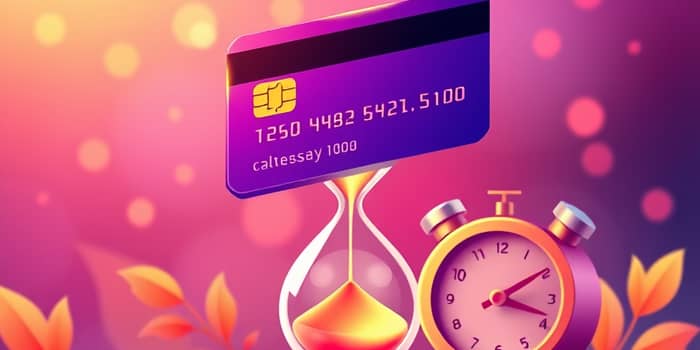
Mastering the art of the credit card grace period can transform your finances and unlock powerful benefits.
The concept of a credit card grace period is deceptively simple yet profoundly impactful. It refers to the window between the end of your billing cycle and the payment due date when you can pay your full statement balance without incurring any interest on new purchases.
This interest-free interval effectively allows you to borrow money for a short span at no cost, provided you meet the conditions set by your issuer.
Understanding the timeline of a grace period is crucial. Most cards offer between 21 and 30 days of interest-free time, though some premium products extend this to 55 days or include promotional offers that further stretch the window.
By federal law, issuers must provide at least 21 days from the statement closing date to the payment due date, yet many voluntarily extend this period to attract and retain customers.
If you pay your previous balance in full by the due date, you automatically benefit from the grace period on all new purchases in the next cycle. You won’t see a penny of interest added to your statement for those charges.
However, the moment you carry any balance forward—not paying the full statement amount—you lose that benefit. New purchases then begin accruing interest immediately, at your card’s APR, until you clear the full balance.
It’s also essential to note that grace periods rarely, if ever, apply to cash advances or balance transfers; those transactions typically start earning interest from day one, unless your card’s terms explicitly state otherwise.
Maintaining and optimizing your grace period requires diligence, planning, and a clear understanding of your billing cycle.
Even a one-day lapse can have significant financial repercussions. If you fail to pay your full statement balance by the due date, you lose your grace period and incur retroactive interest on all purchases, calculated from the original purchase date.
Late fees are commonly assessed if payment arrives after 5 p.m. in your time zone. If the due date falls on a holiday or weekend, issuers usually extend the deadline to the next business day, but relying on this is risky.
These escalating penalties can snowball quickly, drastically affecting your creditworthiness and increasing your cost of borrowing.
Your grace period applies only to new purchases. Any cash advances or balance transfers typically start accruing interest immediately, except in rare promotional cases.
Be cautious with introductory balance-transfer APRs—missing a payment can void the promotion and trigger a higher interest rate retroactively.
Timing is everything. Initiating significant purchases right after the billing cycle opens grants you nearly two months to pay off that expense without interest. Combining this with automation and careful tracking can make the difference between a routine payment and a strategic financial move.
Key tactics include:
Internalizing the crucial figures will empower you to harness the full benefits of your grace period:
By respecting due dates, timing your spending, and fully paying your statement balance, you can master your card’s grace period, reducing interest costs and gaining more control over your cash flow.
Remember that consistency is key. Missing one payment can jeopardize your entire cycle of benefits, leading to increased costs and a damaged credit score. But with regular review of your card’s terms, smart planning, and a proactive mindset, you can transform the grace period from a mere courtesy into a powerful financial tool.
Granting yourself the gift of the grace period is less about luck and more about strategy. By making intentional purchase decisions, keeping a close eye on billing dates, and always paying your full statement balance on time, you can enjoy months of interest-free borrowing and strengthen your financial health. Start today—plan, automate, and optimize your way to smarter credit card use.
References













